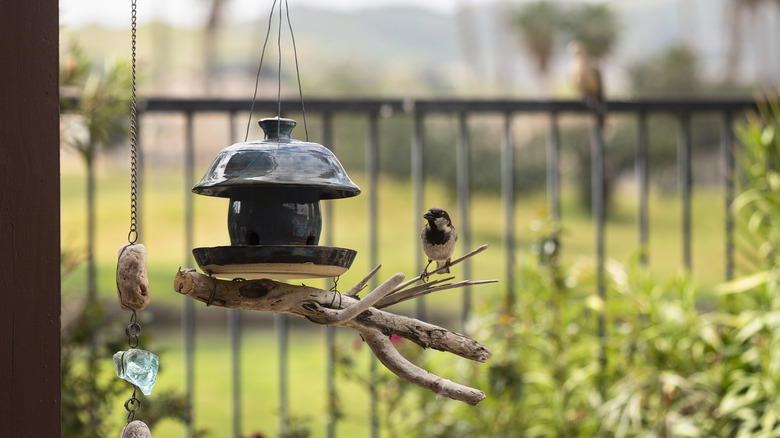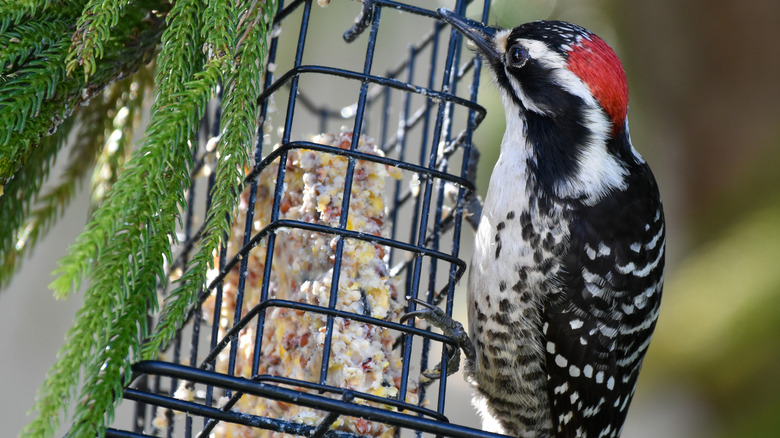The Important Thing To Check For Before Hanging Your Bird Feeder Outdoors
Feeding birds in a backyard bird feeder is a joyful and eye-catching American tradition, with approximately 59 million Americans feeding avian friends at home. There are many benefits to having a bird feeder in your yard, including the delight and beauty you gain from bird watching and listening to lovely bird calls. But with this enjoyment also comes the responsibility of keeping your backyard feathered friends protected and happy, and while many are aware of the must-know safety and cleaning tips for feeding the birds in the backyard, there is one often unconsidered but very important thing to check before hanging your bird feeder: Be sure that you have selected a feeder free of small areas where the birds could get stuck.
While it may seem like an unusual occurrence, birds have a tendency to get caught in pretty unlikely places. This includes small cavities or alcoves on the feeder, as well as inside the feeder itself. Taking the extra minute to inspect your feeder for potentially dangerous nooks and crannies ensures you are making the smartest choices about which feeders to include in your backyard habitat in order to maintain the safety of your avian pals.
Bird feeder safety considerations
Inspect your feeder for any spots where a bird could get its head, foot, or whole body trapped. An example of this would be a crevice where suet feeder cage wires meet the metal or wood base — if there is a small gap, a bird could get their foot stuck between the wire and the base. In this case, opt for a suet feeder without a base, one that has a base that fits flush against the wire suet cage with no gap, or try your hand at this easy DIY natural suet bird feeder made out of a log with no wires.
It is also recommended to steer clear of clear plastic tube feeders with feeding ports larger than 1 inch in diameter, as small birds can get inside, panic, and fly upwards to escape without realizing the way out is at the bottom. Similarly, any wood hopper or house-style feeder with plastic walls that fit tight to the top could cause the same issues, so look for ones with a gap between the plastic and the roof. Generally, it is also recommended that you keep feeders as full as possible, as a nearly empty feeder can entice birds to trap themselves while trying to get at the last few seeds. If you discover a feeder with a potentially dangerous design or area where birds could get stuck, opt for an alternative feeder that will keep your feathered friends protected.


